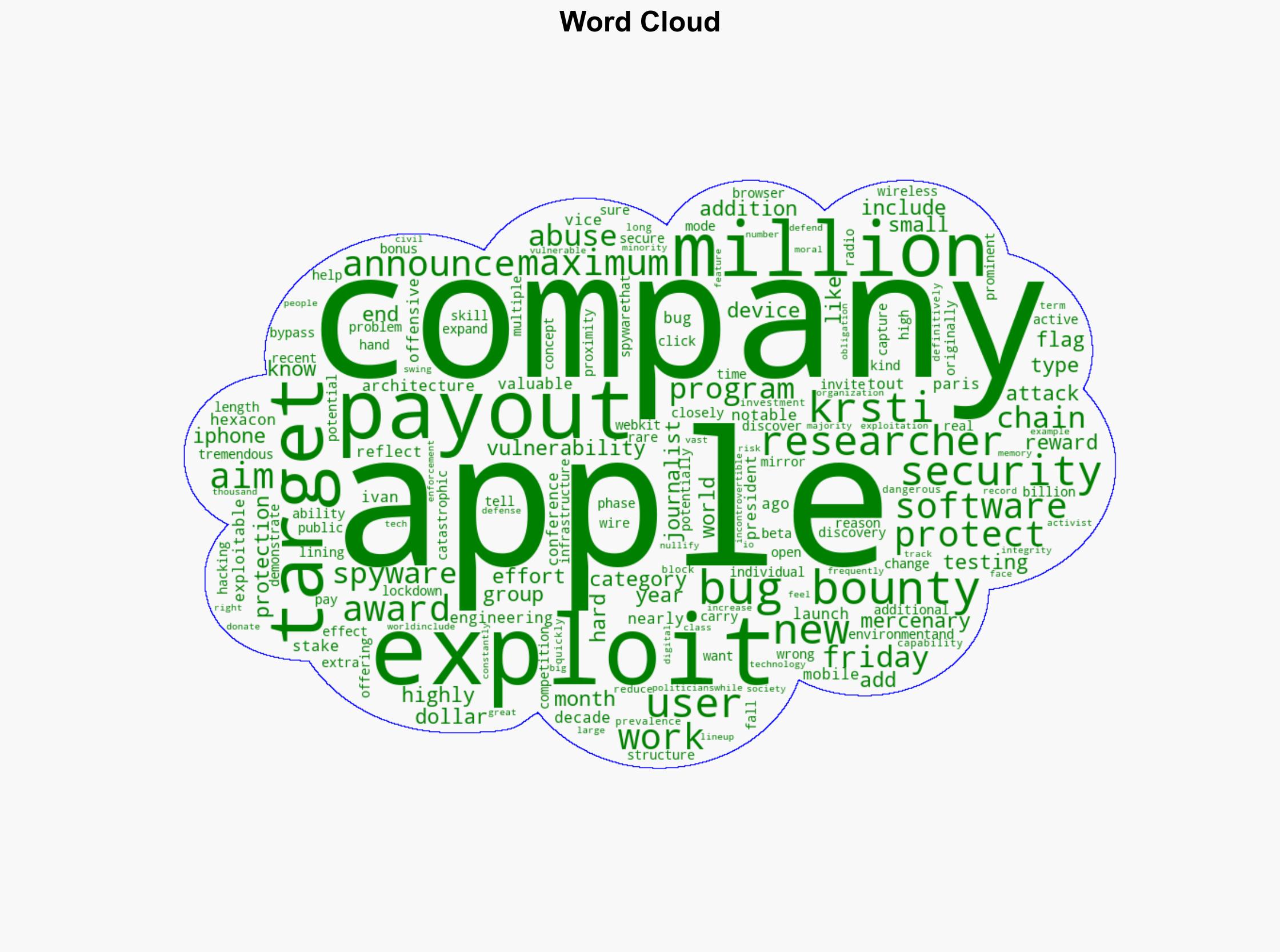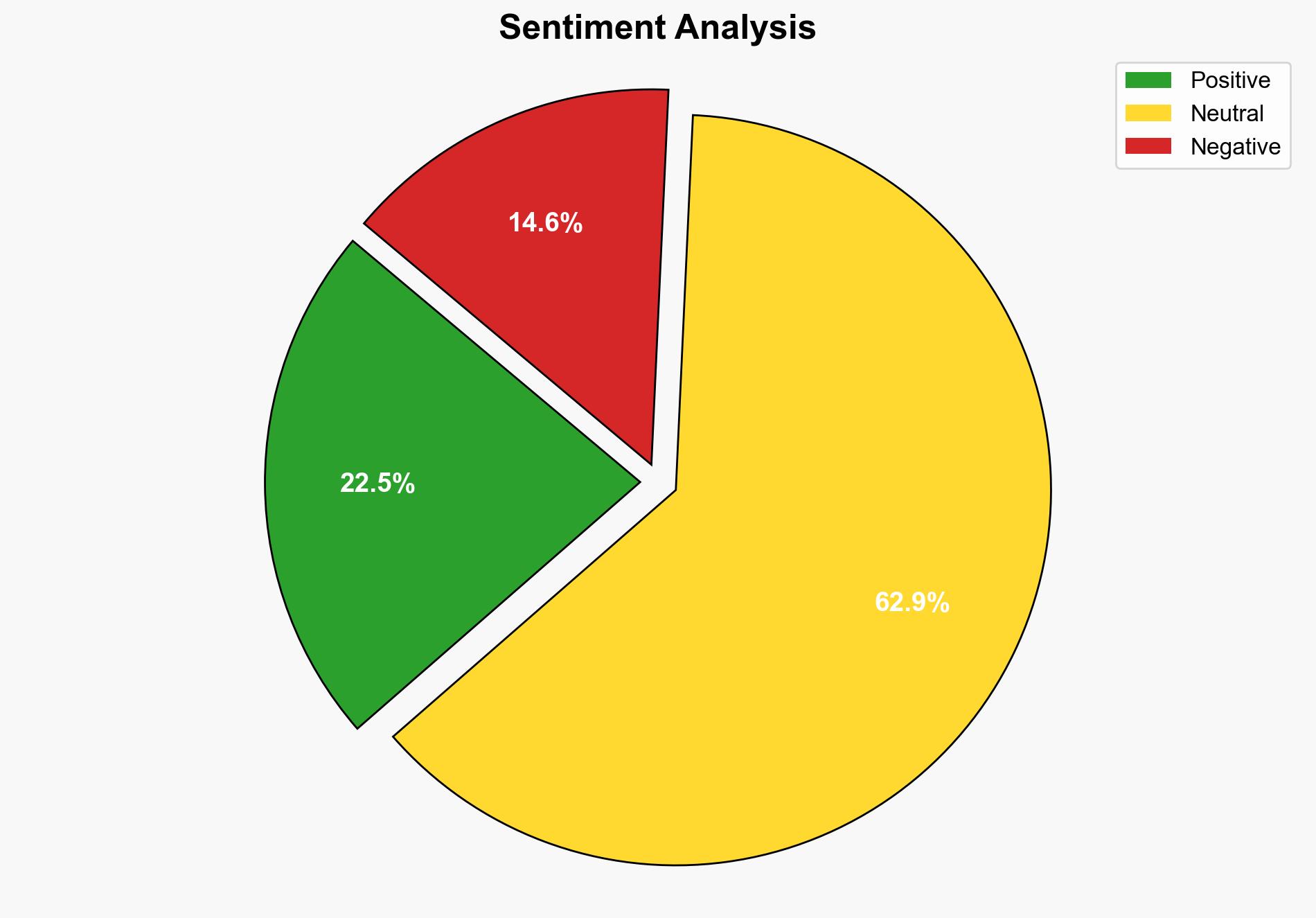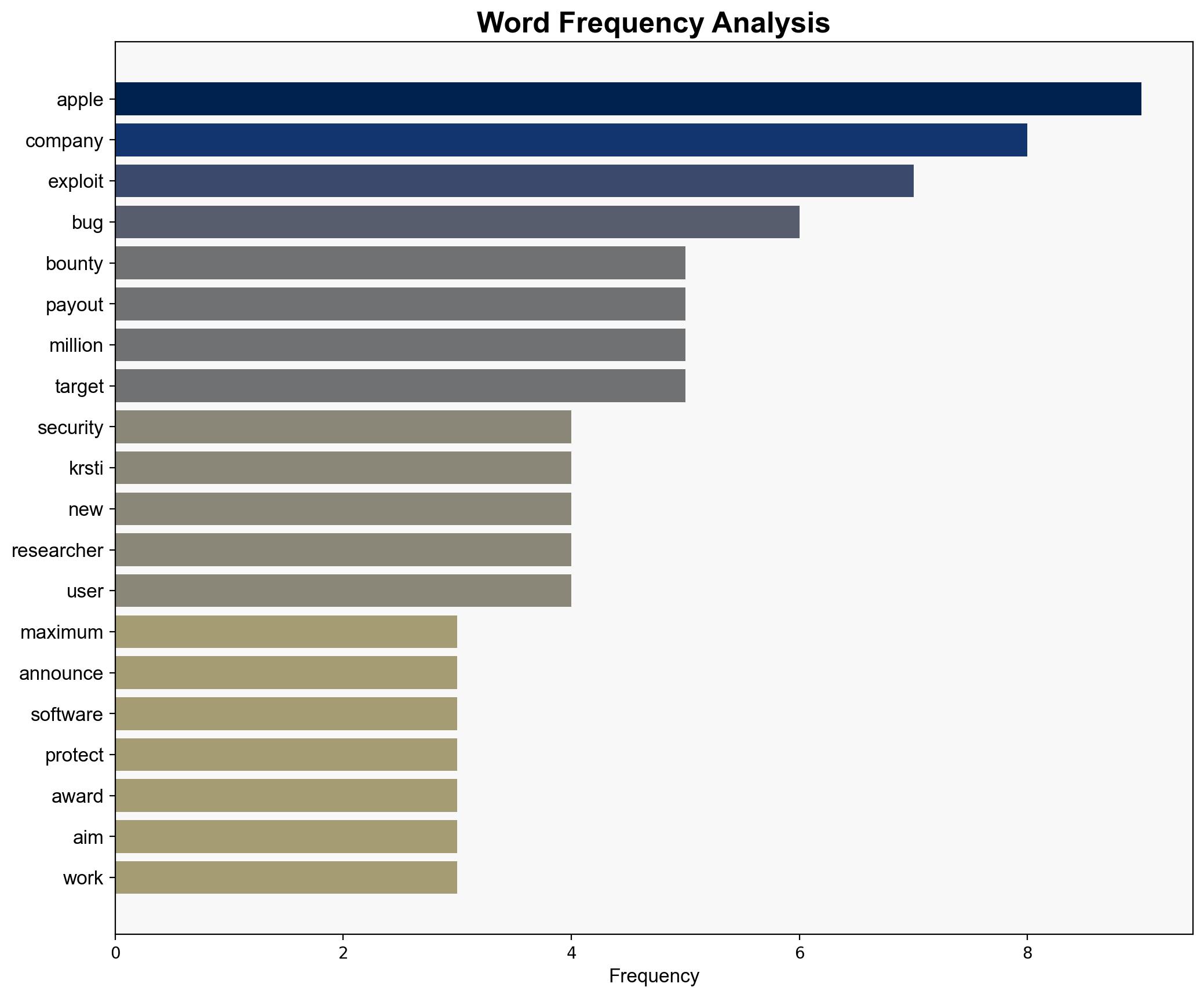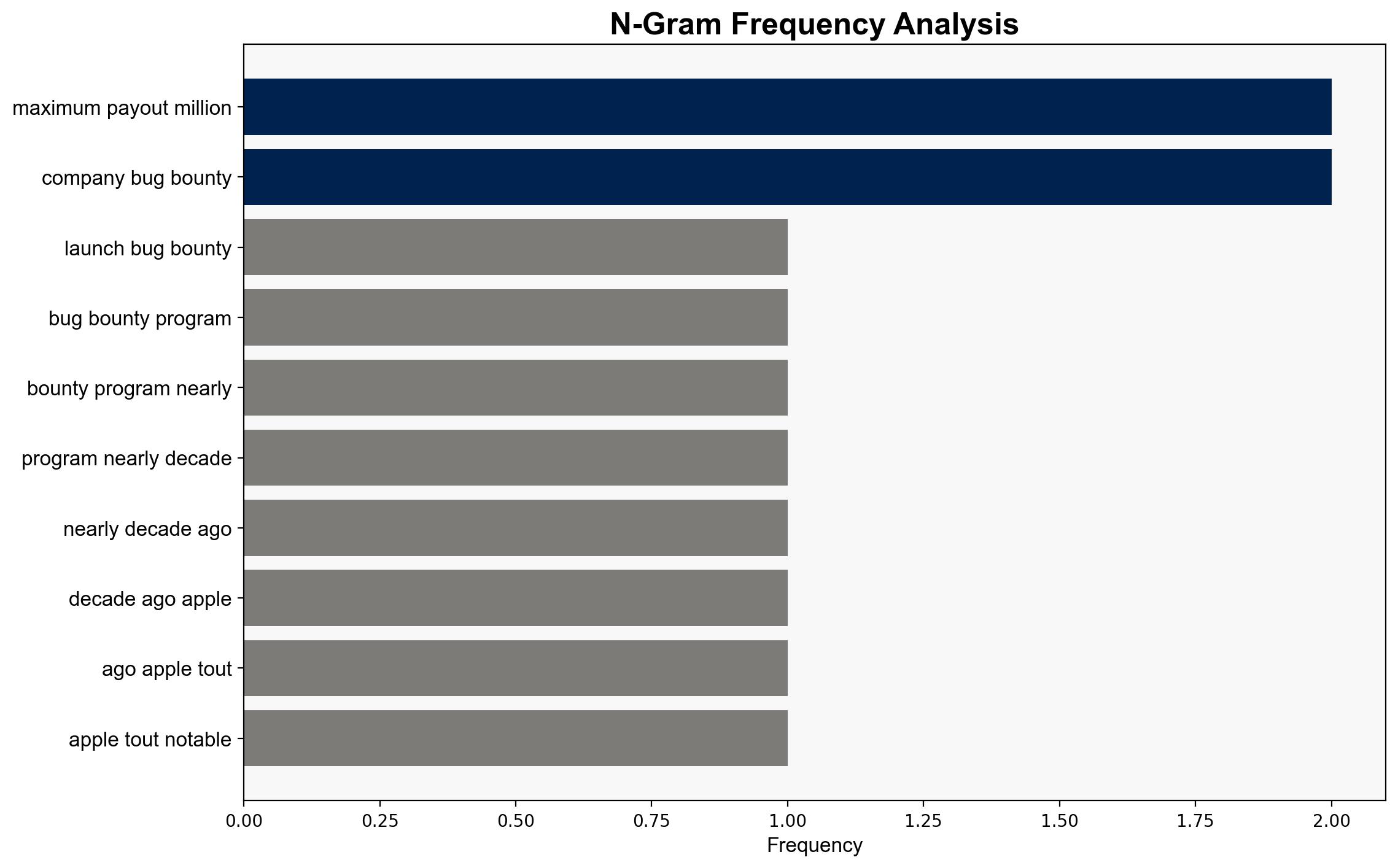Apple Announces 2 Million Bug Bounty Reward for the Most Dangerous Exploits – Wired
Published on: 2025-10-10
Intelligence Report: Apple Announces 2 Million Bug Bounty Reward for the Most Dangerous Exploits – Wired
1. BLUF (Bottom Line Up Front)
Apple’s decision to increase its bug bounty reward to $2 million for the most dangerous exploits reflects a strategic move to enhance its cybersecurity defenses against sophisticated threats. The most supported hypothesis is that Apple aims to preemptively counteract potential security breaches by incentivizing researchers to uncover vulnerabilities before malicious actors can exploit them. Confidence level: High. Recommended action: Monitor the effectiveness of this incentive in reducing exploit incidents and consider similar strategies for other high-risk areas.
2. Competing Hypotheses
Hypothesis 1: Apple is increasing the bug bounty reward primarily to deter mercenary spyware attacks and protect high-value targets such as activists, journalists, and politicians.
Hypothesis 2: The increased reward is a public relations strategy aimed at reinforcing Apple’s image as a leader in cybersecurity, thereby enhancing consumer trust and market position.
Using ACH 2.0, Hypothesis 1 is better supported by the evidence, particularly the emphasis on protecting vulnerable groups and the strategic timing of the announcement at a security conference. Hypothesis 2 lacks direct evidence but remains plausible given Apple’s market-driven motivations.
3. Key Assumptions and Red Flags
Assumptions for Hypothesis 1 include the belief that increased financial incentives will effectively attract top-tier security researchers. A red flag is the potential for this strategy to inadvertently encourage the development of more sophisticated exploits by financially motivated individuals. For Hypothesis 2, the assumption is that public perception significantly influences Apple’s market success. A blind spot is the lack of data on the actual impact of previous bounty programs on security breach reduction.
4. Implications and Strategic Risks
The increased bounty could lead to a surge in exploit discovery, improving Apple’s security posture but also potentially escalating the sophistication of attacks as hackers seek higher rewards. Economically, this could increase Apple’s operational costs but may be offset by reduced breach-related expenses. Geopolitically, Apple’s actions may set a precedent for other tech companies, influencing global cybersecurity standards. Psychologically, it reinforces Apple’s commitment to user safety, potentially increasing consumer loyalty.
5. Recommendations and Outlook
- Continuously evaluate the bug bounty program’s effectiveness in reducing exploit incidents and adjust rewards as necessary.
- Engage with cybersecurity experts to explore additional protective measures beyond financial incentives.
- Scenario-based projections:
- Best-case: Significant reduction in successful exploits, enhancing Apple’s reputation and market share.
- Worst-case: Emergence of more sophisticated exploits, leading to increased security breaches.
- Most likely: Moderate improvement in security posture with incremental gains in consumer trust.
6. Key Individuals and Entities
Ivan Krstić, Apple Vice President of Security Engineering and Architecture.
7. Thematic Tags
national security threats, cybersecurity, counter-terrorism, regional focus





